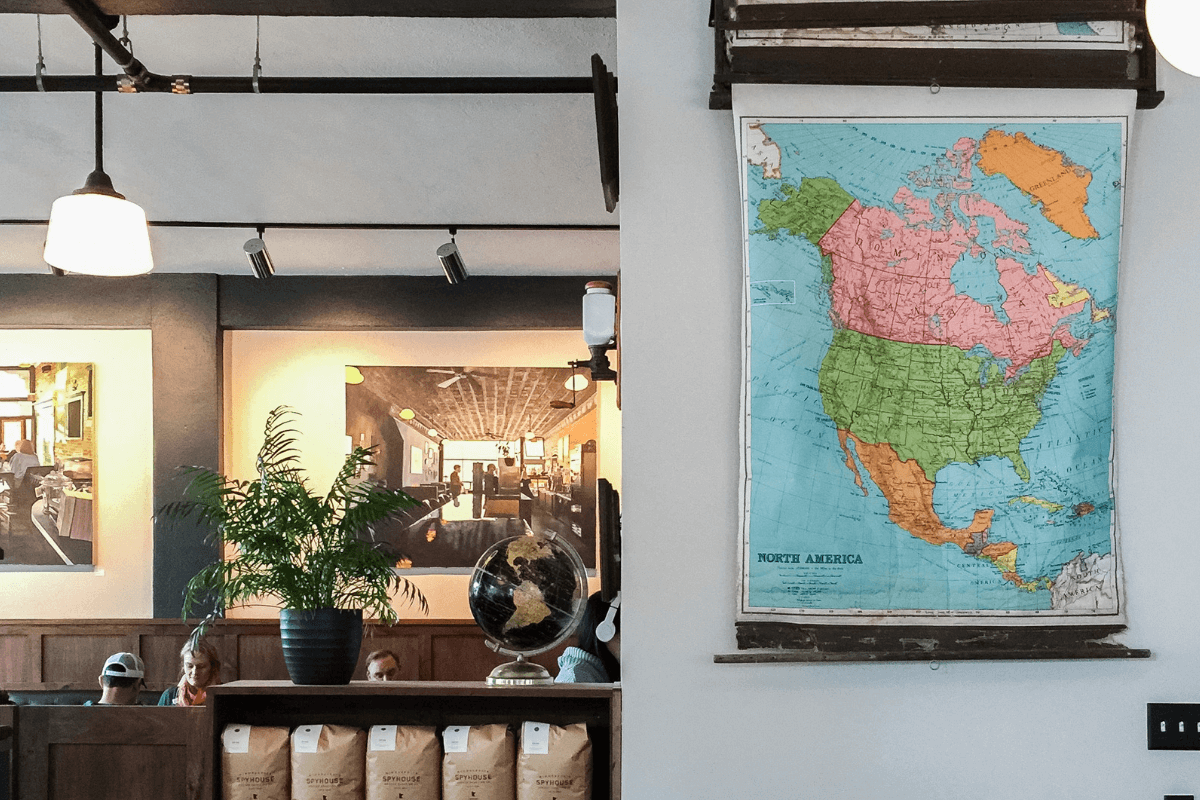Coffee Facts, Coffee Tips
The Evolution of the Modern Day Coffee House
It’s hard to imagine a world where coffee didn’t exist. And, you’re right to think that way. For the most part, coffee has been around for thousands of years. Who discovered the coffee and how it was brewed is largely unknown, but what do know is that the sentiment of the coffee house hasn’t changed much since its inception.
The First Coffee Houses
Coffee houses date all the way back to 1475. They originated in Turkey, and the first man on record to open and run such an establishment was Kiva Han in what was then Constantinople and is now Istanbul. The first iteration of a coffee house served them strong and very black. Turkish culture revered coffee and took the consumption and brewing very seriously. If a husband could not supply his wife with enough coffee, she was legally allowed to divorce him.
The coffee houses were located throughout metropolitan areas in Constantinople and usually served by very masculine men. Even during this time, which was the Ottoman Empire, the central role of a coffee house was to provide locals with a place to socialize and meet with friends. The only difference was the entertainment. It was expected for patrons to witness shadow puppet performances or to be read folk literature. Coffee was a beloved drink in the Turkish culture and would slowly trickle its way into Europe.
Who first started roasting coffee and how it came to pass is a bit of a mystery. What is known is that coffee was around in the year 100 in Yemen and Ethiopia. It’s believed that the advent of the coffee house is what made coffee so popular in not only Turkey but the rest of the world.
Coffee Making Its Way to Europe
In the early 1500s, the Turkish army invaded Vienna. Because coffee was such an essential part of their culture, the Turkish brought it with them. However, when they left the city, many bags were left behind. It was Franz Georg Kolschitzky who claimed the leftover bags as “spoils of war” and decided to open a coffee house. He had previously lived in Turkey and was familiar with the brewing and consumption of coffee. It was more or less his idea to start filtering coffee and sell them alongside pastries and sweet cakes. Europeans are also responsible for adding different ways to indulge in coffee. It was their idea to add cream and sugar to make the drink a little less acidic.
The coffee houses in Vienna were prevalent and began to spring up in other areas as well. The coffee houses here were a reflection of the same Turkish tradition of being a place for social gathering. It was viewed as a place to unwind and rarely were hot topics like politics ever discussed. Each country did apply different applications to the coffee house. For example, in France, the cafe served alcohol alongside the coffee.
British Coffee Houses
What’s surprising about the British coffee houses was the initial lack of enthusiasm that quickly materialized into 82 different coffee houses within ten years of the first one opening. Queen Elizabeth I, reopened Mediterranean trade routes reigniting relations with the Moroccan and Ottoman empires. A merchant trader by the name of Daniel Edwards utilized this new juncture as a way to increase his own trade. As a result, he spent quite a deal of time in Turkey and became accustomed to the Turkish coffee houses. On his way back from a route, Edwards brought back some coffee and a servant named Pasqua Rosee.
What Edwards began to notice was the lack of work getting done when his friends would stop by. What ended up happening instead were lengthy conversations over a cup of coffee. Edwards recognized the enjoyment of socializing with a fresh brew, so he set up his servant Rosee with the first coffee house in London in 1652. Most people were appalled by this hot drink and described it as “boiled shoot.” Pamphlets made their way around demonizing the drink and its stench. However, most of these words of criticism were from the taverns which were seeing their business slowly slipping away to the coffee house.
The uniqueness of the British coffee house was the way each one served or catered to a different market. It was customary for the Londoner to visit a coffee house at least once a day as a way to get the latest about politics, news, or information from the market in which they worked. The social environment encouraged intelligent thinking and shunned anyone who got loud or rowdy. It was often customary for anyone who did get into a heated discussion to buy everyone in the coffee house a round as payment for their outburst. So much time was spent at the British coffee house that some men had their mail delivered there.
The American Coffee House
As the British and other Europeans began to make their way to America, so came the coffee. The format followed suit of their predecessors and coffee houses were considered a place to meet to discuss business. In New York, The Tontine Coffee House was such a popular place to meet it became the location of the stock exchange.
Today most coffee houses still reflect the old traditions of friends or colleagues meeting to discuss work, politics, or the latest news. Sometimes the name coffee shop is misused. A coffee shop is a place that serves coffee as well as a menu of food. The Tin Cup strikes a similar chord. Our coffee shop was established by a team of marketers who believe in providing form and function. The idea was to create a space that invited innovation and collaboration whether it be amongst colleagues or friends.

